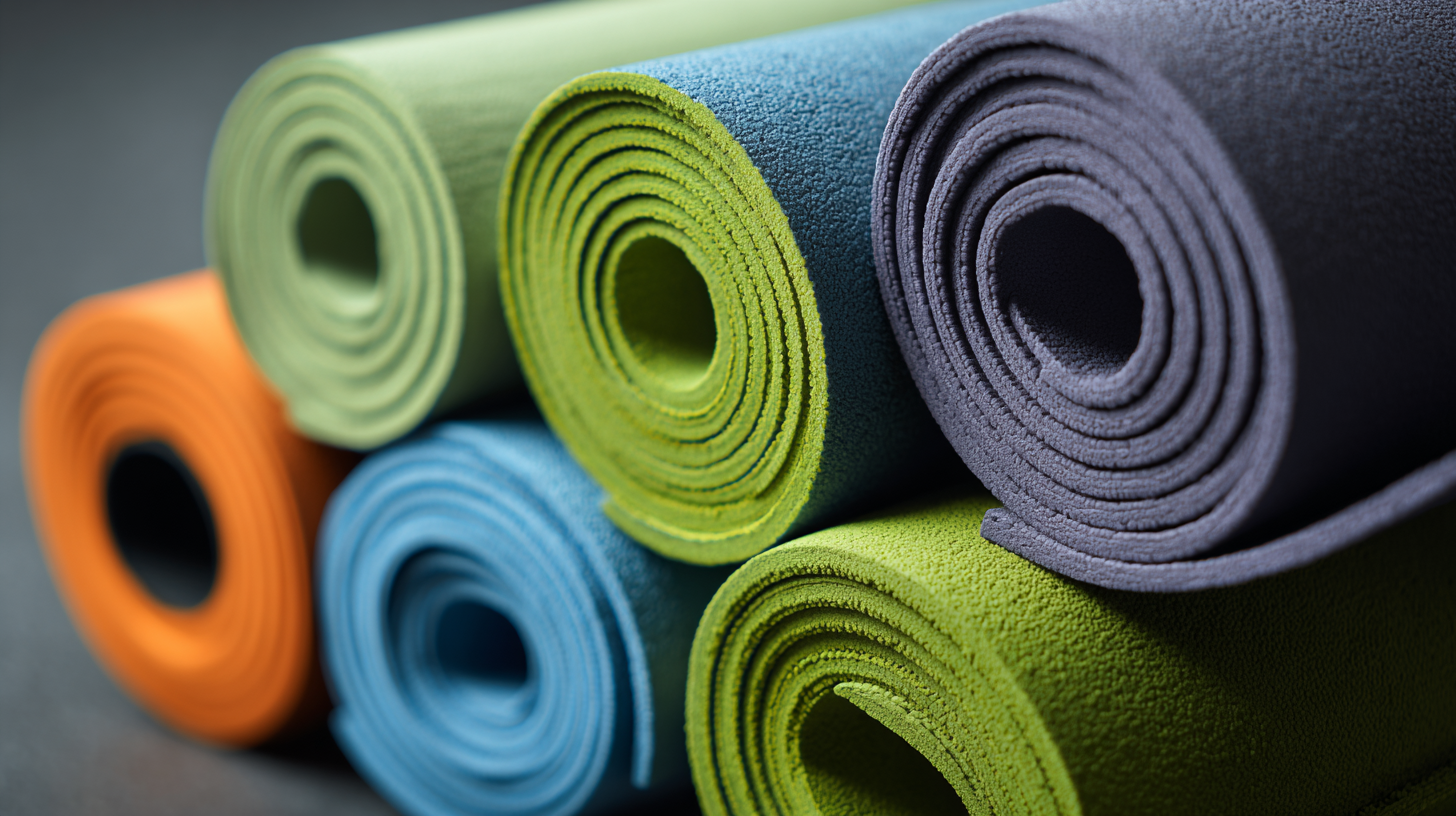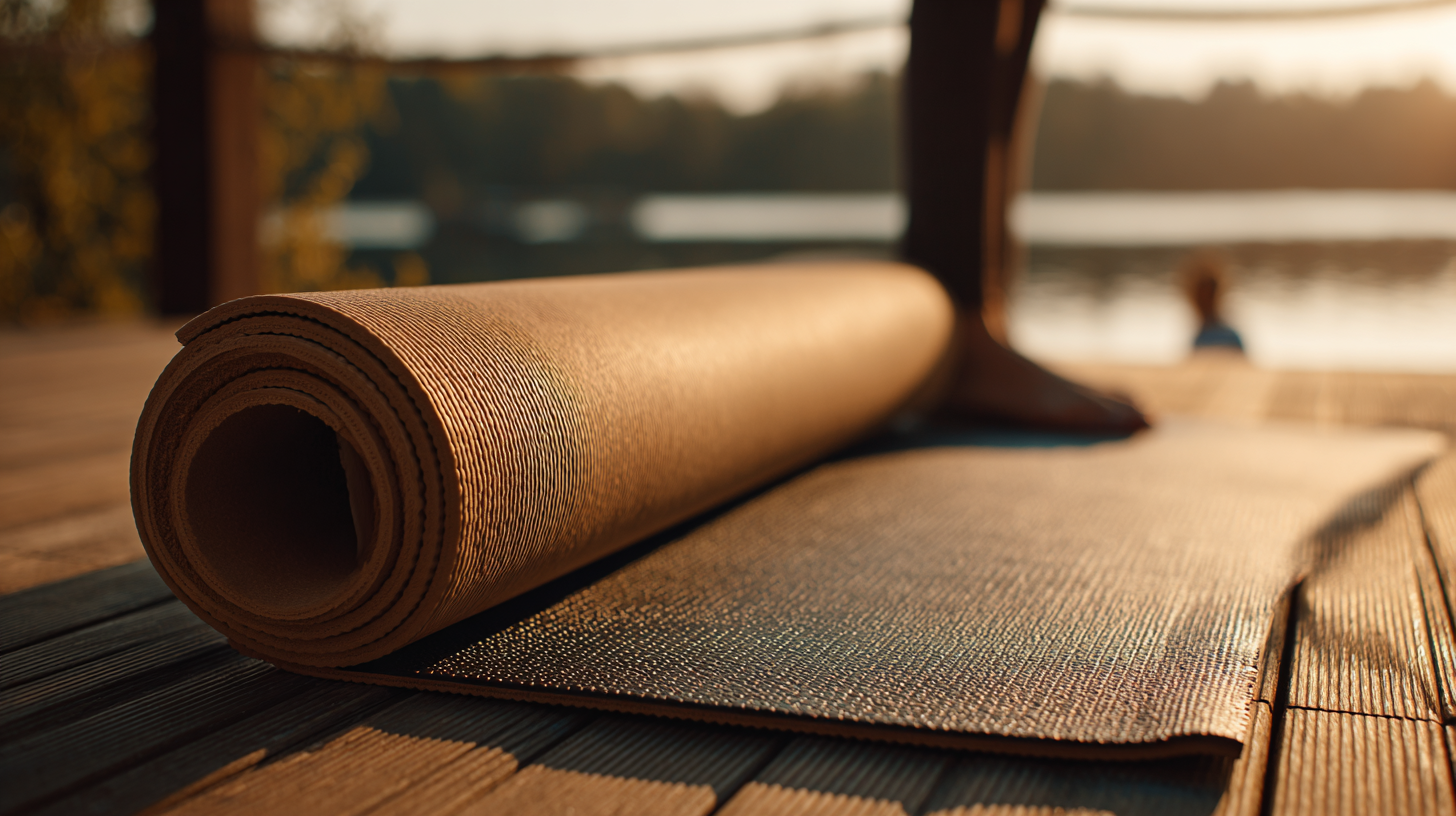As the wellness industry continues to evolve, the demand for high-quality fitness accessories, particularly the Foam Yoga Mat, remains robust. According to recent market research, the global yoga mat market is projected to grow at a compound annual growth rate (CAGR) of approximately 6.5% between 2020 and 2025. This growth underscores the importance of choosing the right manufacturer to ensure both product performance and sustainability. With the increasing consumer focus on eco-friendly materials and durability, it is crucial for manufacturers to innovate while meeting the diverse needs of yoga practitioners.

Furthermore, the rising trend of at-home fitness—accelerated by recent global events—reinforces the necessity for effective solutions that enhance user experience, making the selection of the ideal Foam Yoga Mat manufacturer a pivotal decision for retailers and consumers alike.
As we approach 2025, the foam yoga mat market is undergoing significant transformations driven by evolving consumer preferences and technological advancements. One key trend is the increasing demand for eco-friendly materials. Many manufacturers are integrating sustainable practices into their production processes, aiming to reduce environmental impact while providing high-quality, durable yoga mats. This trend not only resonates with environmentally-conscious consumers but also positions brands as leaders in corporate responsibility.
Tip: When selecting a foam yoga mat, prioritize those made from sustainable materials, as they often offer a good grip and cushioning without compromising the planet's well-being.
Another trend is the customization of yoga mats. Personalized designs are becoming popular, allowing practitioners to express their individuality on the mat. Manufacturers are adopting innovative printing techniques that enable users to choose colors, patterns, and even incorporate personal mottos or images.
Tip: Look for brands that offer customization options to create a yoga mat that reflects your personal style and enhances your practice experience. By being aware of these trends, consumers can make informed choices about the products that best fit their needs and values.

When it comes to selecting a high-quality foam yoga mat, understanding consumer preferences is essential for manufacturers aiming to meet market demands. According to a recent report by IBISWorld, the global yoga mat industry has grown steadily, projected to reach $20 billion by 2025. This growth is primarily driven by the increasing popularity of yoga and fitness activities, which has led consumers to seek mats that offer not just comfort but durability and performance as well.

Users typically prioritize certain features in a foam yoga mat. A survey conducted by Statista revealed that 45% of participants emphasized the importance of grip and stability during practice, while 35% highlighted the need for cushioning and support. Additionally, eco-friendliness is now a significant factor, with 25% of consumers preferring mats made from sustainable materials. These insights underscore the need for manufacturers to focus on developing mats that balance performance with environmental considerations, ensuring they meet the evolving preferences of conscious consumers looking for both functionality and sustainability in their yoga gear.
In the competitive landscape of foam yoga mat manufacturing, selecting the right manufacturer is crucial for ensuring quality and performance. With a surge in demand for fitness products, numerous manufacturers have emerged, each vying for market share. Understanding the competitive dynamics is essential for businesses seeking to invest in top-quality foam yoga mats. The focus should be on manufacturers that not only prioritize innovative production techniques but also adhere to sustainability practices, as environmentally-conscious consumers are becoming increasingly prevalent.
Recent developments in the manufacturing sector illustrate how companies are revolutionizing their production lines. Some manufacturers are incorporating advanced technologies and smart manufacturing practices, drawing inspiration from successes observed in other industries. This shift towards automation and precision allows for higher quality production and a faster turnaround time, placing these companies ahead in the competitive foam yoga mat market. Emphasizing the need for immersive experiences with manufacturers can also benefit buyers by offering a deeper understanding of production capabilities and quality assurance processes, ultimately leading to better purchasing decisions.
| Manufacturer Type | Material Used | Eco-Friendliness | Price Range (USD) | Durability (Years) |
|---|---|---|---|---|
| Budget Manufacturer | Polyvinyl Chloride (PVC) | Low | 20 - 30 | 1-2 |
| Mid-Range Manufacturer | Thermoplastic Elastomer (TPE) | Medium | 40 - 60 | 3-5 |
| Premium Manufacturer | Natural Rubber | High | 60 - 100 | 5-10 |
| Eco-Friendly Manufacturer | Cork and Natural Fibers | Very High | 70 - 120 | 7-12 |
The demand for eco-friendly options in foam yoga mat production has surged as more practitioners become conscious of sustainability. Manufacturers are now prioritizing innovative materials that minimize environmental impact while maintaining performance. Biodegradable foams, made from natural rubber or plant-based materials, offer a compelling alternative to traditional synthetic options. These materials not only provide excellent grip and cushioning but also break down more easily after disposal, contributing positively to the planet.
Additionally, it's essential for consumers to understand how these eco-friendly innovations affect their practice. Mats made from non-toxic, water-based adhesives and dyes ensure a healthier environment both for the user and the ecosystem. By choosing manufacturers that prioritize sustainable practices and material sourcing, yoga enthusiasts can enjoy their practice with the peace of mind that they are making responsible choices. As the industry evolves, the integration of eco-friendly options sets a new standard for quality, proving that sustainability and high performance can go hand in hand.
When it comes to selecting a foam yoga mat, understanding the pricing strategies is crucial for consumers navigating the wide array of options available on the market. The cost of these mats often reflects not only the material quality but also the manufacturing processes involved. Premium mats typically use eco-friendly materials and advanced technology that enhance durability and grip, making them more appealing to serious yoga practitioners. Consequently, consumers tend to associate higher prices with better performance, which can influence their purchasing decisions.
On the other hand, budget-friendly options are also available, appealing to casual users or beginners who may not want to invest heavily. These mats might be made from less durable material but can still provide adequate support for introductory practices. As such, the perceived value often plays a significant role in consumer choices. Consumers must weigh their commitment to yoga against their willingness to invest in a higher-quality mat, ultimately leading to the conclusion that pricing strategies significantly impact how yoga enthusiasts choose the right foam yoga mat for their needs.
